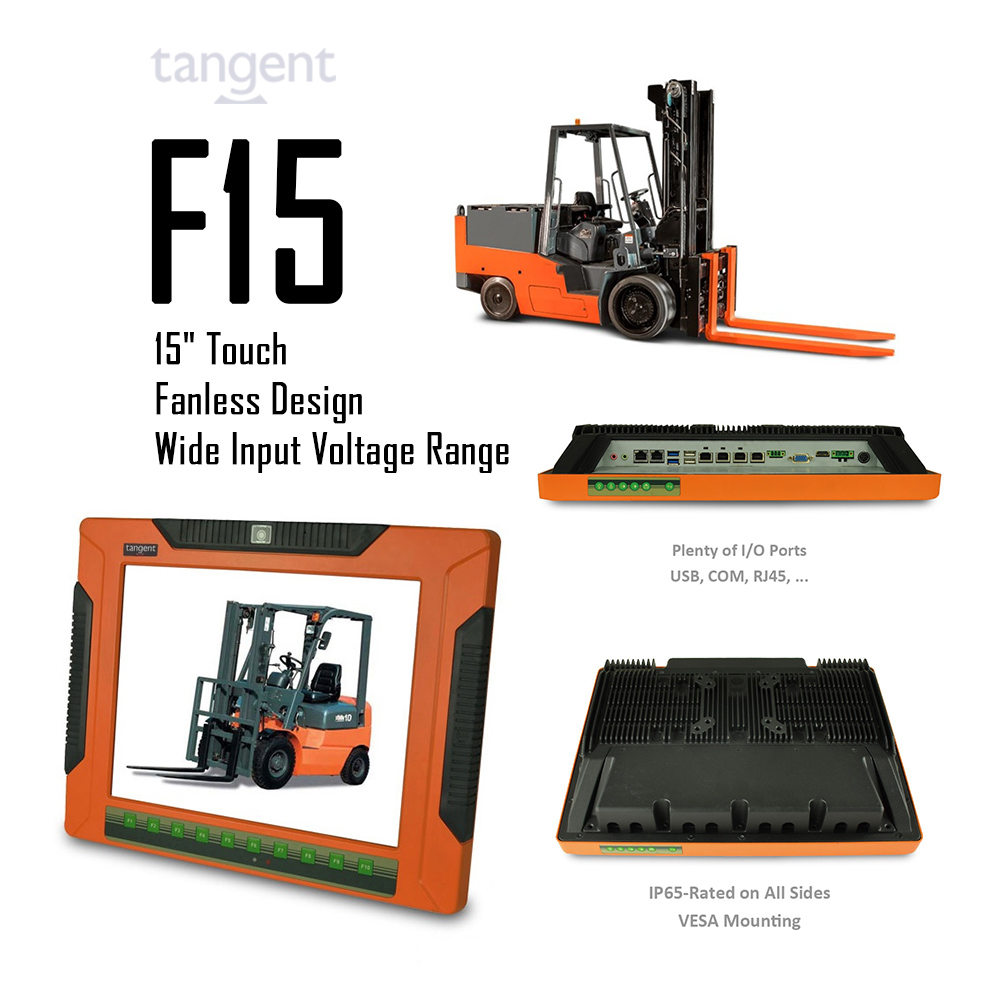All About Forklift Computers
Forklifts first came about in the early twentieth century and their practical purpose didn’t change much over the years; they picked up freight, moved it from one short distance to another or from ground level to higher storage spaces. Although the forklift’s intended functionality was fairly simplistic, continued warehouse process improvement efforts coupled with technological progress eventually enveloped this modest warehouse vehicle into a new role: inventory management and asset tracking. By placing an industrial grade computer on the unit, a forklift operator was able to scan items as they were being stored. A forklift computer’s primary objective is now to help organize an active warehouse facility, sending real-time information to logistics operations or to an inventory information database. This is a huge boon to organizations like home improvement stores who have to move and replenish stock several times a day.
Forklift mounted computers have been attempted for at least a dozen years, but they were bulky and difficult to use while a worker was also trying to operate the vehicle. More space effective, customizable all-in-one touchscreen computer formats like ones offered by Tangent are making it easy to complete repeated tasks and keep the small cab of the vehicle free of clutter and cabling. The Tangent F15 industrial all-in-one touchscreen computer was specifically created with forklift mounting and use in mind. Chief amongst it’s notable features is ten programmable function keys on the front panel. This allows the forklift operator to complete several repeatable tasks at the touch of a button, which means being able to work without requiring both hands and doing it safely. Wireless and bluetooth capabilities allow users to connect to networks and databases without the need for an ethernet cable connection. The construction of the Tangent F15 computer also lends itself to industrial warehouse conditions. The enclosure is completely sealed and rated at IP65 for being protected against water and dirt intrusion. The bright orange casing makes the unit easy to identify within the forklift cockpit, and easy to see the buttons for one-handed use when the operator is multi-tasking. The casing is designed for mounting on forklift applications with M8 heavy duty screws, and the computer has been tested for shock and vibration resistance.
Some companies have taken to using tablets on forklifts, which does allow for more mobility with the computer, but one of the bigger criticisms of using those is that the battery only lasts so long before a charge is required. This wouldn’t be a problem except that forklifts typically use DC power, not AC, and so time would be lost in charging or the expense of having to keep several tablets on hand. The Tangent F15 has a wide input voltage range allows for integration into more environments that can use either DC or AC power.
A range of I/O devices useful to inventory management are available for the industrial computer including an internal GPS module and an RFID (MiFare). GPS is popular for use in geo-fencing and RFID uses electromagnetic fields to automatically identify and track tags attached to inventory, removing the need to manually scan an item to identify it. For those who prefer barcodes and scanners, there’s a multitude of input ports for peripherals and devices. A lot went into consideration when this industrial all-in-one was designed for warehouse and forklift use. And as with industrial operations, it’s always better to have the right tool for the job.
